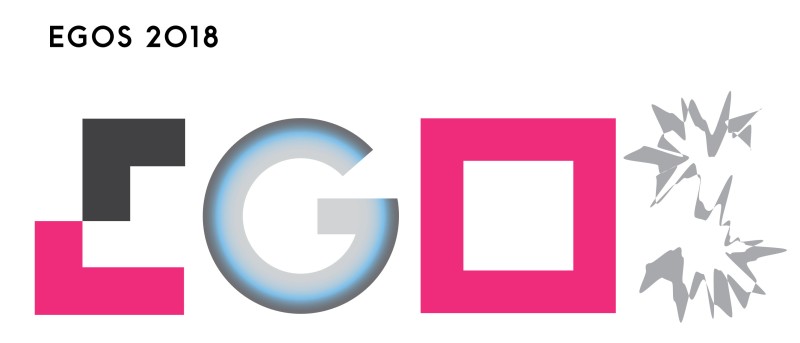Sub-theme 34: Organized Creativity: Harnessing Serendipity and Surprise
Call for Papers
The journey of an idea in or across organizations is full of surprises (Van de Ven et al., 1999; Perry-Smith & Mannucci,
2017). Organizations that aim to be creative and innovative not only have to come up with novel and valuable ideas, they also
have to implement them so as to create positive experiences for the users of their products and services as well as for their
members. At both ends, during idea generation as well as during its implementation and marketization, the uncertainty and
ambiguity inherent in the creative process is the basis for new (re-)combinations and thrilling user experiences (Hutter,
2011).
The sub-theme seeks to uncover the structures and practices by which organizations harness serendipity
and surprises in their efforts to be creative and innovative, as these dynamics stand in a fundamental tension with common
aims of organizing such as routinization, standardization and complexity reduction (Cohendet & Simon, 2015; DeFillippi
et al., 2007; Ortmann & Sydow, 2017).
We are particularly interested in the following aspects:
- Time: Are surprises and serendipity only harnessed at certain moments in time and, if yes, how do organizations create such moments? When and how do ideas change? How can creativity be sustained or even routinized (Sonenshein, 2016)? Which theories and methodologies are suited to analyze creative processes (Fortwengel et al., 2017)?
- Levels: Organizational creativity not only involves individuals and groups inside of organizations, but also spans across organizational boundaries involving networks, clusters, communities (Grandadam et al., 2013). Are different organizational forms and levels more or less suited to handle serendipity and surprise?
- Politics: Surprise may be desired for some stakeholders, but the uncertainty involved might also create tensions and aversions among employees as much as among users. What are the politics of negotiating surprises in processes of creativity and innovation in and across organizations?
- Contexts: Some industries, regions or organizational fields may be more prepared and equipped to harness serendipity and surprises than others. How do creative processes vary across different contexts, e.g. the arts and the sciences?
- Causes of serendipity and surprise: Surprise in organizations can stem from different sources, such as a lack of sufficient knowledge. In cognitive terms, surprises are based on comparisons between unrelated fields, as in “bisociation” (Koestler, 1964). What are the sources of surprise in or across organizations? What is the role of digital technology as a source of serendipity and surprise, but also as an additional resource to harness it (Mangematin et al., 2014)?
- Orchestrating and managing surprise: Going beyond the well-known “play zones” of Google and the 20% rule of 3M: what practices are available for organizations, networks and clusters to create surprises and harness serendipity? How can creativity and learning help organizations to capitalize on surprises? What is the role of humor in this regard? And how do such practices interact with other organizational practices geared more towards reducing uncertainty?
We invite theoretical and empirical papers using qualitative
or quantitative research methods that address these and related topics.
References
- Cohendet, P., & Simon, L. (2015): “Introduction to the Special Issue on creativity in innovation.” Technology Innovation Management Review, 5 (7), 5–13.
- DeFillippi, R., Grabher, G., & Jones, C. (2007): “Introduction to paradoxes of creativity: managerial and organizational challenges in the cultural economy.” Journal of Organizational Behavior, 28 (5), 511–521.
- Fortwengel, J., Schüßler, E., & Sydow, J. (2017): “Studying organizational creativity as process: Fluidity or duality?” Creativity and Innovation Management, 26 (1), 5–16.
- Grandadam, D., Cohendet, P., & Simon, L. (2013): “Places, spaces and the dynamics of creativity: the video game industry in Montreal.” Regional Studies, 47 (10), 1701–1714.
- Hutter, M. (2011): “Infinite surprises: on the stabilization of value in the creative industries.” In: J. Beckert & P. Aspers (eds.): The Worth of Goods: Valuation and Pricing in the Economy. Oxford University Press, 201–220.
- Koestler, A. (1964): The Act of Creation. New York.
- Mangematin, V., Sapsed, J., & Schüßler, E. (2014): “Disassembly and reassembly: An introduction to the Special Issue on digital technology and creative industries.” Technological Forecasting and Social Change, 83, 1–9.
- Ortmann, G., & Sydow, J. (2017): “Dancing in chains: Creative practices in/of organizations.” Organization Studies, first published online on August 19, 2017, https://doi.org/10.1177/0170840617717096.
- Perry-Smith, J., & Mannucci, P.V. (2017): “From creativity to innovation: The social network drivers of the four phases of the idea journey.” Academy of Management Review, 42 (1), 53–79.
- Sonenshein, S. (2016): “Routines and creativity: From dualism to duality.” Organization Science, 27 (3), 739–758.
- Van de Ven, A.H., Polley, D., & Garud, R. (1999): The Innovation Journey. Oxford: Oxford University Press.


